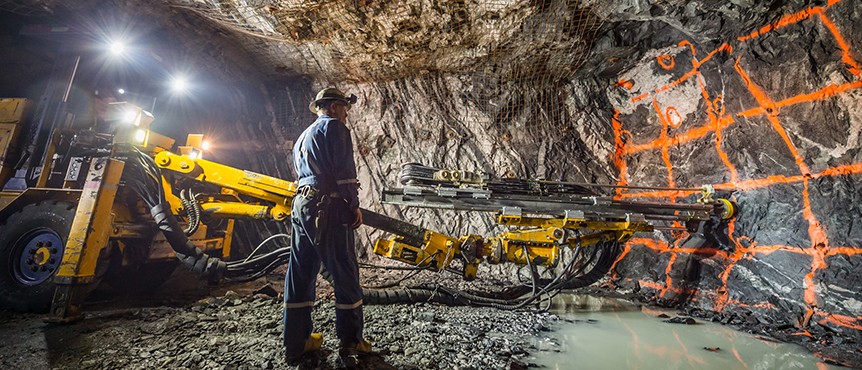With the mining industry recovering from the worst downturn in living memory, the incentive to improve efficiency by the use technology is more compelling than ever.
RELATED PUBLICATION
ARTICLES FROM THIS PUBLICATION
Technology and Services in Manitoba and Saskatchewan: A Conservative Industry Embracing Change
 IMAGE: Courtesy of SSR Mining
IMAGE: Courtesy of SSR Mining
Particularly in light of adverse market conditions, companies across the mining supply chain are as focused as ever on reducing costs and increasing efficiencies wherever possible. Aside from low commodity prices, Saskatchewan and Manitoba’s companies are facing challenges at a regulatory and policy level. “It is a very challenging time for the mining sector, particularly because of increased costs related to proposed carbon taxes, additional regulatory processes and continually escalating power costs that competing jurisdictions are not faced with,” highlighted Schwann, president of the Saskatchewan Mining Association. “There is work to be done to ensure the sector remains globally competitive while ensuring a continued strong environmental and safety performance.”
A key challenge for many companies, particularly in the extraction of rare earths, is economic feasibility. While at first glance this challenge would seem to present an excellent opportunity for innovators to present more efficient or cost-effective solutions, uptake of new technologies remains slow in this historically conservative industry. “It is not common to get an opportunity to innovate with customers,” stated Jason Mewis, president and senior engineer at EngComp, a heavy industrial process engineering firm for which the mining industry accounts for about 75% to 80% of business. “They tend to prefer tried-and-tested solutions, and their risk appetite is very sensitive. Adoption is further complicated because contracts and methodologies for procuring service providers are not conducive to innovation. Therefore, a lot of equipment and processes in the mining sector remain very traditional.”
Turning Data into Information
Nevertheless, companies are recognizing a need for new technologies and are becoming more open to the implementation of new solutions. Automation technologies are gaining further traction, and Big Data is an increasing focus for most engineering firms. “As the demographics change with the retirement of mine founders and third generations joining the industry, uptake of automation is increasing in order to be more globally cost-competitive and gain more recovery out of processes,” highlighted Mike Fedoroff, general manager at Hatch.
Referencing the advancement of artificial intelligence (AI) and its application to mine data to discern trends for better operation, Fedoroff continued: “The ability to store massive amounts of data coupled with the ability to search and analyze it for trends can be implemented for facility improvements. Uranium and potash are 100% exported commodities, so it is important to improve facilities for increased global cost-competitiveness.”
Mining companies themselves are collecting ever more data as the number of technological devices on a mine site proliferates and its potential to drive efficiency is realized. Vancouver-based Motion Metrics helps mining companies by offering advanced monitoring technologies and AI to improve the longevity and safety of shovels, help spot missing teeth in loaders, and bring about rapid fragmentation analysis. The data points from its monitoring tools are then put on the cloud. “Connectivity to the cloud means things are no longer local. It brings more visibility to upper management and brings out a lot of dirty laundry. This puts pressure on our engineering team to continuously improve,” commented Shahram Tafazoli, president and CEO, Motion Metrics.
Whereas before companies were wary of putting data on the cloud, primarily due to security concerns, now there is growing demand for it, according to Warren Carvey, regional manager - commercial support, acQuire Technology Solutions. “Every mine now has sensors and drones capturing data,” commented Paul Whelan, managing director, acQuire North America. “All of this data needs to be organized in a better way as data can be more of a problem if is not managed and analyzed in an efficient manner.”
The Mine of the Future
With technology moving fast and changing important aspects of how mines are operated, it is a relevant question to ask where these trends will take the mining industry in the future and what this means for Saskatchewan and Manitoba. Mines of the future could have far fewer humans working on them compared with today. The speed of uptake suggests this could happen in the next 10 years: “Fully autonomous mines will become a reality, given the speed of adoption of autonomous trucks in places like Chile, North America and Australia. People are still trying to work out how to have autonomous shovels but dozers are easier to automatize,” predicted Tafazoli.
A large proportion of the mines in Saskatchewan and Manitoba are underground which are higher risk in terms of safety and usually higher cost, so there is a particular interest in improving the efficiency and safety of such mines, which is where automation can help. Epiroc, a global supplier of rock evaluation equipment, has been leading the way in automation for underground mines. “In Australia we have multiple units drilling autonomously. We have just launched our first cab-less rotary drill, which is entirely remotely controlled… Autonomous underground drills and having someone working remotely from above ground, is key,” commented Jamie Charland, regional manager – western Canada. “It also increases productivity; one person operating multiple drills, especially in remote locations, will be more productive.”
Hudbay is now using autonomous equipment underground at its Snow Lake mine. “They are recommissioning another unit to start next month. They love the safety factor for their staff underground and everyone who operates the equipment from the surface is very happy with its performance, remarked Joe Gilewicz, regional manager – midwestern Canada. “I can see it expanding rapidly at that site over the next few years.”
With the mining industry recovering from the worst downturn in living memory, the incentive to improve efficiency should linger longer in the minds of mine managers compared with previous cycles. At the same time, the digital revolution affecting so much of the global economy is unlikely to leave Saskatchewan and Manitoba’s mining industry untouched, and could provide significant improvements in efficiency and safety.











